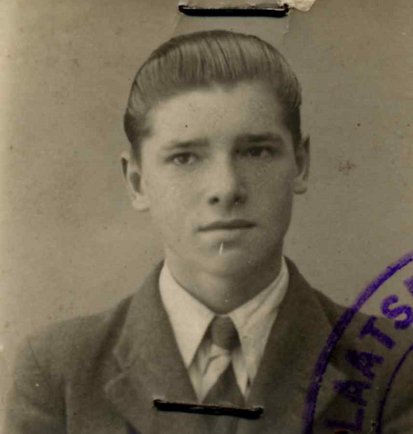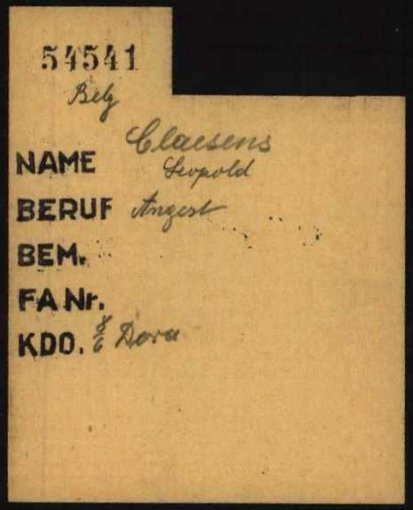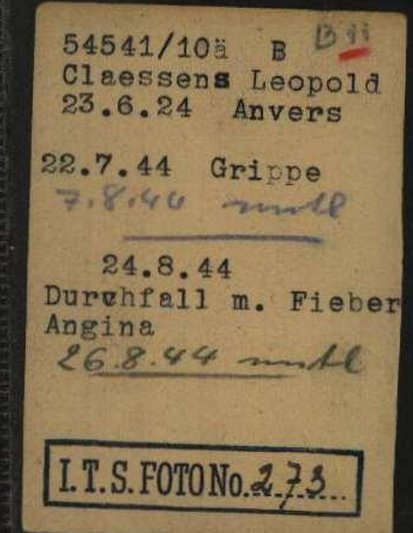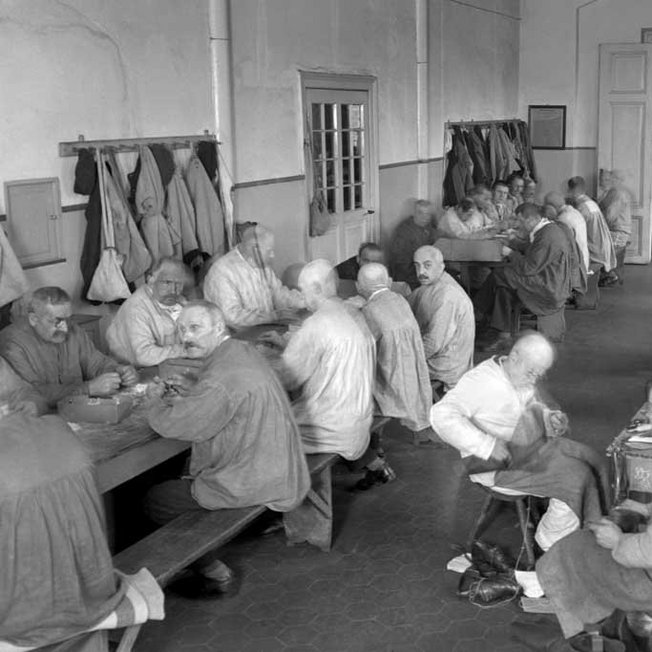Forced labour in the underground mines
In July 1944, the SS transferred Leopold Claessens to the Harzungen satellite camp. Harzungen was the second largest satellite camp of Dora, with an average of 4,000 prisoners. Since 1944, Dora was run as a separate concentration camp complex called Mittelbau-Dora. Throughout his imprisonment, Leopold Claessens was subjected to the hardest physical labour, working on the extension of the tunnels at Harzungen. He had to loosen rock with a pneumatic hammer and was constantly surrounded by dust and dirt and exposed to the danger of falling rocks. The SS did not provide the prisoners with the necessary protective equipment. He fell ill several times during his imprisonment at the Harzungen satellite camp.
In early April 1945, the camp was “evacuated”. In other words, the SS sent the prisoners to other concentration camps further behind front lines. Leopold Claessens was sent to Bergen-Belsen in an overcrowded freight wagon. He was very weak when he arrived at Bergen-Belsen. On 15 April 1945, he was liberated in Bergen-Belsen by British troops.
After forced labour
After the Second World War, Leopold Claessens returned to Belgium. He was seriously ill and part of his lung had to be removed. While recovering in a Swiss sanatorium, he met his future wife. Their son was born in 1950. Leopold Claessens worked as a salesman for various companies, most recently for the chemical company BASF. He was plagued by nightmares for many years, but was unable to talk to his wife or parents about his traumatic experiences in the concentration camp. After 43 years, he returned to the scene of his suffering for the first time. This was the beginning of the slow process of coming to terms with what had happened to him as a concentration camp prisoner. Leopold Claessens died in July 2011 at the age of 87.





